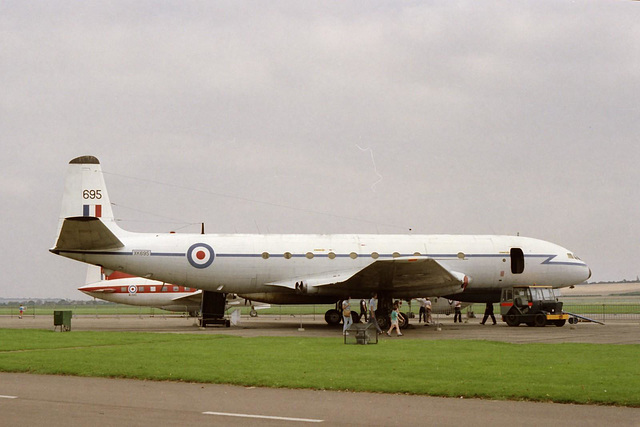QSL Common and Precious
Street Lights
Con à perpétuité ! Stupid for life it says ! Fune…
Huntaway dog statue in Hunterville
Glencoe
Landscape Artist
Let's dance in high heels ! / Danse et talons…
...bestrickend...
❤️ Caffe Cordina (2019)
Renault Express pick-up 1996.
Mitilini PLS-602
SAINT VALENTIN
Pferde auf der Koppel
“La plus noble des vertus reste la gentillesse, ma…
Tourbillon ......................Bonne soirée à to…
Lago di Tovel, Brenta
4. Advent
Un jour par an, le Mardi gras par exemple, les hom…
Island Sunlight
GoogleMaps streetview car
❤️ Mata Hari-1 (1910)
DIAGONALE ... HFF
ein Mammut im Schnee
Guyana-1968-0.40
LF Marathon
...gemeinsam...
100 PELDAÑOS HACIA EL MAR
Gonset Communicator radios
Dragonfly CU911 @EGSU
Bon WE à vous !
Karl aussi est triste !
Fontaine Ain Fouara..
IMG 5030
Bonne soirée
The Light of Fall - Herbstmorgen (125°)
Tenaya Creek - Yosemite NP - Sept. 1989
mist
Bonne fête aux Papas **********Bon dimanche !
Bon Dimanche et bonne fête aux papas .......!
ST Malo !
Excellent WE à tous !
Ben oui!!! faut bien que j'occupe mes insomnies
Solar, Wave, Wind or Nuclear
GRENADE
Gothic......hic !!!!! Miaou !!!!!!!!!!!! Meow…
Location
Lat, Lng:
You can copy the above to your favourite mapping app.
Address: unknown
You can copy the above to your favourite mapping app.
Address: unknown
See also...
See more...Keywords
Comet XK695 @EGSU


De Havilland DH-106 Comet 2R XK695 (c/n 06030) , formerly of RAF 51 Squadron, on display at Duxford Aerodrome, EGSU (1987).
XK695 was retired to the Imperial War Museum (IWM) Duxford in 1975 having completed flying 8,236 hours in over 3,200 flights.
Because of excessive corrosion, she was dismantled in 1992. Now only the nose and a part of the cockpit are preserved at the de Haviland Aircraft Museum in Hertfordshire, UK.
Also uploaded on Wikimedia Commons as: commons.wikimedia.org/wiki/File:19870830-Duxford-XK695.jpg

This work is licensed under a Creative Commons Attribution-ShareAlike 4.0 International License.
XK695 was retired to the Imperial War Museum (IWM) Duxford in 1975 having completed flying 8,236 hours in over 3,200 flights.
Because of excessive corrosion, she was dismantled in 1992. Now only the nose and a part of the cockpit are preserved at the de Haviland Aircraft Museum in Hertfordshire, UK.
Also uploaded on Wikimedia Commons as: commons.wikimedia.org/wiki/File:19870830-Duxford-XK695.jpg

This work is licensed under a Creative Commons Attribution-ShareAlike 4.0 International License.
Leo W, Paolo Tanino, Stephan Fey, Nouchetdu38 and 3 other people have particularly liked this photo
- Keyboard shortcuts:
Jump to top
RSS feed- Latest comments - Subscribe to the comment feeds of this photo
- ipernity © 2007-2025
- Help & Contact
|
Club news
|
About ipernity
|
History |
ipernity Club & Prices |
Guide of good conduct
Donate | Group guidelines | Privacy policy | Terms of use | Statutes | In memoria -
Facebook
Twitter

Aircraft overview:
Intended for longer range than the Mk.1, the Comet 2 had a 3 ft fuselage extension, Rolls Royce Avon engines, and increased fuel capacity. Eighteen Mk.2s were built of which only fifteen flew. Built at Hatfield, this particular aircraft was the 30th Comet built, having been ordered as G-AMXH for British Oversees Airways Corporation (BOAC). When that order was cancelled, the fuselage was strengthened and the aircraft was taken over by the RAF as XK695, a C.Mk.2 transport able to carry up to 44 troops, but also quickly convertible for VIP use or casualty evacuation. In that role, it entered service with 216 sqn at Royal Air Force (RAF) Lyneham in 1956. It was later modified for radio signals duties as a Mk.2R, at Hatfield and by Marshall’s of Cambridge. For the new role, the cabin was filled with special radio and surveillance equipment and operating stations. Externally it carried a variety of aerials, plus two ventral radomes. From 1963 it served as one of seven such aircraft with 51 sqn at RAF Watton, then RAF Wyton. With a flight crew of six, plus up to 26 avionics systems operators, it flew secret ‘ELINT’ (Electronics Intelligence) flights along the borders of the Warsaw Pact countries, recording radar signals and eavesdropping on military communications. Nimrod R.1 aircraft later replaced the Comets
Aircraft specifications:
Power Unit: Four 7,300 lbst Rolls Royce Avon 503 turbojets
Wing Span: 115 ft (35.05 m)
All-up Weight (A.U.W): 120,000 lb (54,431 kg)
Cruise Speed: 490 mph (789 kph)
Cruise Altitude: 40,000 ft (12,192 m)
Range: 2,100 miles (3,380 km)
Passengers: 36 to 44
On display at the Museum:
The Museum’s exhibit, XK695 was retired to the Imperial War Museum (IWM) Duxford in 1975 having completed flying 8,236 hours in over 3,200 flights. Because of excessive corrosion, it was dismantled in 1992. The surviving nose and front fuselage was donated to the Museum in 1995, by Hanningfield Metals in Essex. The supporting metal frame was sponsored by City Steel of St Albans.
www.ipernity.com/group/fivehundredandmore
Sign-in to write a comment.